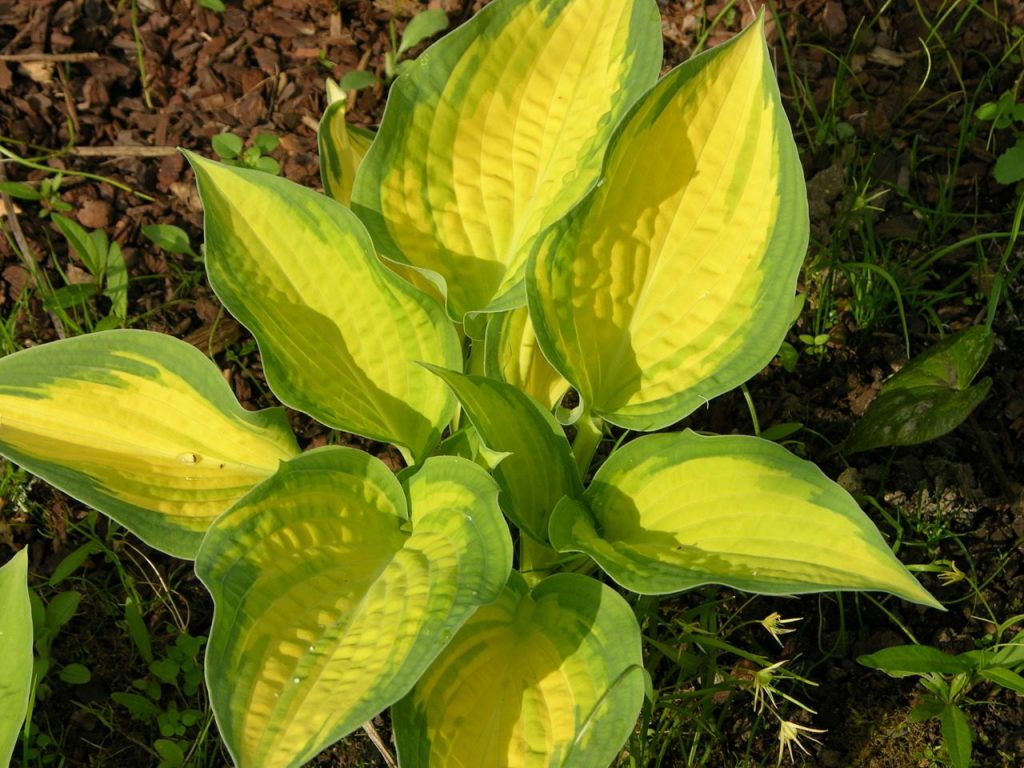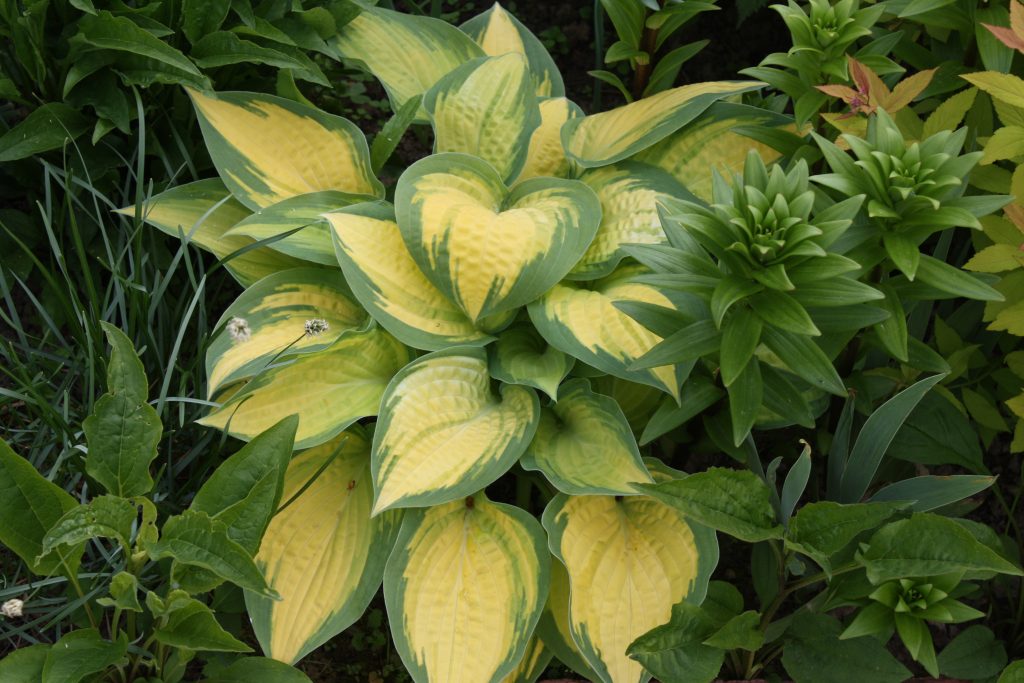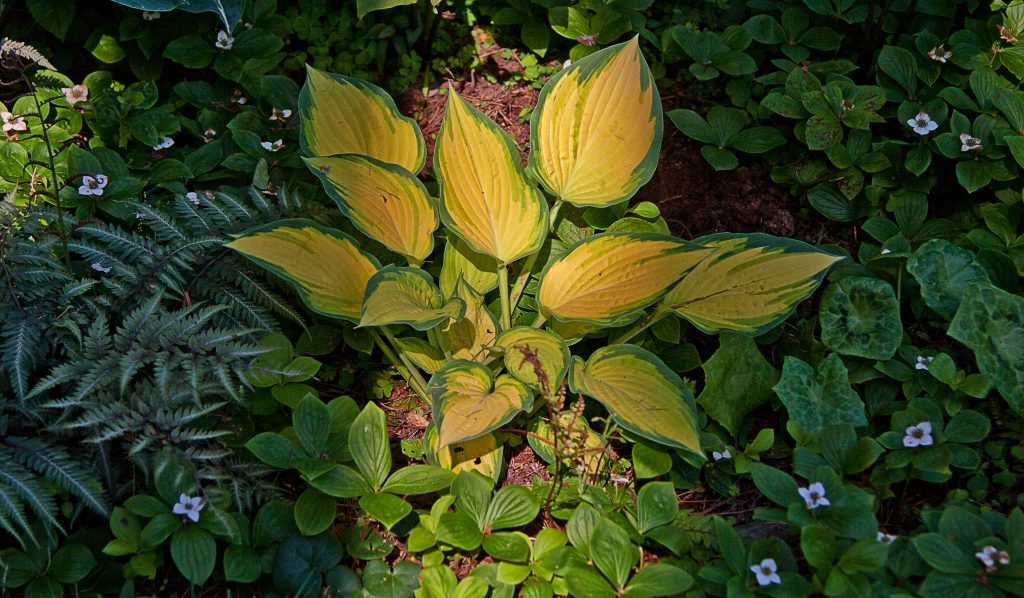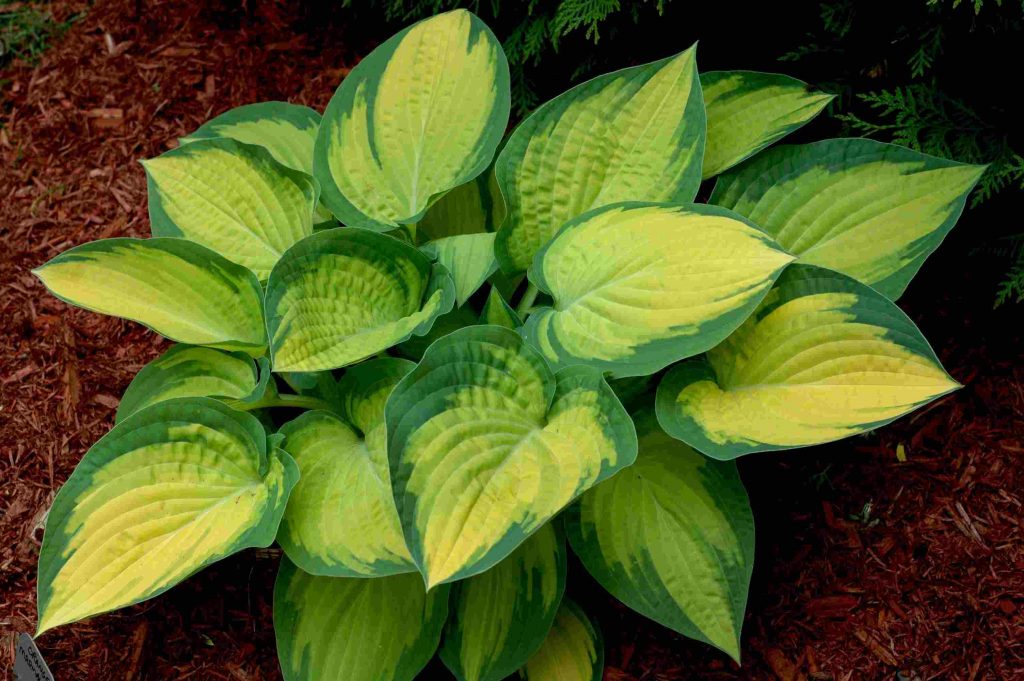Hosta Orange Marmalade - variegated plant
Hosta Orange Marmalade is a bright, showy variety known since 2002. It is a sport from Pauls Glory (originator - R. Solberg). The name of this variety is translated as "Orange (or orange) marmalade". The plant is very popular due to its decorative foliage, shade tolerance and unpretentiousness.

Hosta orange marmalade description
Description of the variety
Function Orange Marmalade belongs to the Asparagus family. This is a medium-sized bush, reaching a height of 40-60 cm. In width it can grow up to 1 m. The main highlight of the variety is delightful decorative leaves (20 cm by 15 cm) oval in shape with a sharp tip.
The leaves are decorated with light corrugated veins and a bright palette of colors: they are yellow-orange in the center, bluish-green at the edges.
You should not expect from this funky the classic brightness of "Orange", but it has exactly that exquisite muted transparent shade that distinguishes real orange marmalade.
Hosta bloom begins in July and lasts until early August. Graceful bell-shaped flowers appear on tall peduncles. The color of the petals is soft lavender.
Landing features
To most clearly show the decorative properties, this function should grow in light shade or openwork penumbra. With constant exposure to the sun, the center of the leaves turns white, and the green edge turns yellow.
The scorching midday rays can provoke a real burn, therefore, during especially hot hours, the flower in an open space must be shaded. Full shade is also not recommended, otherwise the leaves will not grow orange, but light green.
Hosta Orange Marmalade is not picky about soil fertility. She loves light loams, but can grow on sandy or clayey soils. In the first case, they are "weighted" with organic matter (peat or compost), and in the second, sand is added. No melt or rain water should accumulate at the planting site.
Technology:
- Dig a hole 50 cm deep and about the same width (70-80 cm recede from the nearest perennials).
- Drainage from gravel, small pebbles or brick chips is laid at the bottom.
- The soil is mixed with compost and peat - this mixture is filled with a third hole (you can add complex mineral fertilizers).
- The host is moved along with the earthen clod, watered abundantly, sprinkled with substrate and tamped.
- From above, the soil is mulched with pieces of pine bark.
Care
Caring for Orange Marmalade is completely uncomplicated and quite accessible to novice gardeners. The most important thing is to provide the plant with constant soil moisture (but not excessive). Twice a season, the bush is fed, and cut off in the fall.

Host orange marmalade
Watering
In the absence of natural precipitation, the funkia is watered twice a week at the root. Use 1-3 buckets of water depending on the size of the bush. Watering is done in the morning, not in the evening, so that moisture does not attract snails, caterpillars and slugs.
Top dressing
The best top dressing is mulching with peat and compost (which creates additional benefits - reduces moisture evaporation and greatly facilitates maintenance).
The procedure is carried out twice: during active growth of leaves (in spring and early June) and after autumn pruning. After spreading the mulch, the funkia is watered abundantly.
Pruning and preparing for winter
When the leaves turn yellow and begin to lie on the ground, they cut the ground part of the bush. This allows you to remove slugs and caterpillars hidden at the base of the shoots.
Function is a frost-hardy plant that adequately tolerates winter without shelter. However, to be sure, it can be sprinkled with dry foliage. Young hosts cover with spruce branches.
Reproduction
This function is easy to propagate by cuttings or dividing the bush. A rosette shoot is cut off with a "heel" and treated with a rooting stimulator. The soil in the shade is loosened, mixed with compost and watered well. The shank is deepened and covered with a plastic bottle. The soil is regularly moistened, and the cover is raised to allow air to enter.

Hosta orange marmalade reviews
You can divide the bush 4-6 years after planting. It is best to do this in April or late August. Funkia is dug up and divided into several parts, each of which must have at least one kidney. Delenki are planted in fertilized soil in partial shade and watered well.
Diseases and pests
| Problem | Symptoms | Prophylaxis | Wrestling |
| Slugs, snails, caterpillars. | Traces of mucus and holes in the leaves. | The correct watering regime is in the morning, not in the evenings; Sprinkle the soil with tobacco, superphosphate, pebbles. | Place traps (pieces of plywood, boards), assemble by hand. Use special products based on methylaldehyde. |
| Rot of leaves and root collar. | The ground part of the plant withers and gradually dies off. Brown spots appear on the leaves, starting from the tips. | Drain the soil well, do not overfill the soil. Disinfect the substrate and garden tools. | Cut off infected leaves and stems, treat the host with fungicides (Trichodermin, Oxyhom, Topaz). Transplant to a new place, and replace the soil in the old one. With an advanced disease, it is better to completely burn the bush. |
Application in landscape design
Function Orange Marmalade will become a bright accent of the garden or plot. It will revive the green mass, create harmonious combinations with conifers and flowers. This hosta is grown as a tapeworm, ground cover plant, living curbs.

Hosta orange marmalade photo
It can grow in a pot or container, which allows you to decorate small courtyards, balconies, terraces. It is very convenient to plant it next to shrubs or small spruces in a multi-tiered composition, thereby providing the necessary openwork partial shade. Function Orange Marmalade organically complements Japanese and rocky gardens, rock gardens, rockeries and flower beds.
Testimonials
According to gardeners, the function of Orange Marmalade has an amazing color, which is more vividly drawn in openwork partial shade than in full shade. The color of the leaves is not orange, but completely matches the shade of orange marmalade or jelly. The bush has an average growth rate, but with additional feeding it grows faster.
It has been noticed that a properly cut hosta successfully endures the winter even without shelter. It is resistant to temporary droughts, diseases and pests. The most popular method of propagation is by cuttings, since the division of the bush can be carried out infrequently (so as not to slow down development), and the seeds do not retain varietal characteristics.

